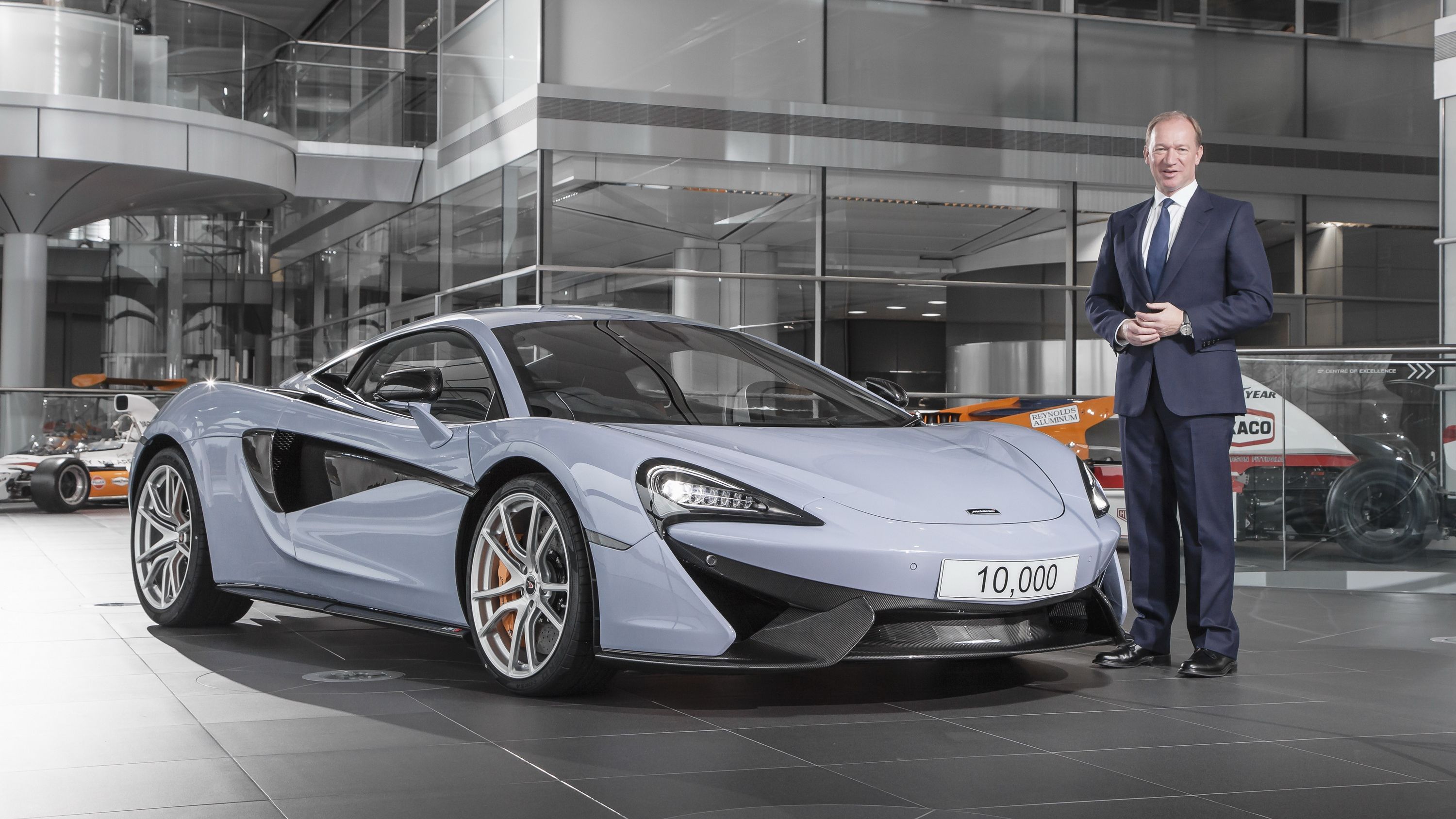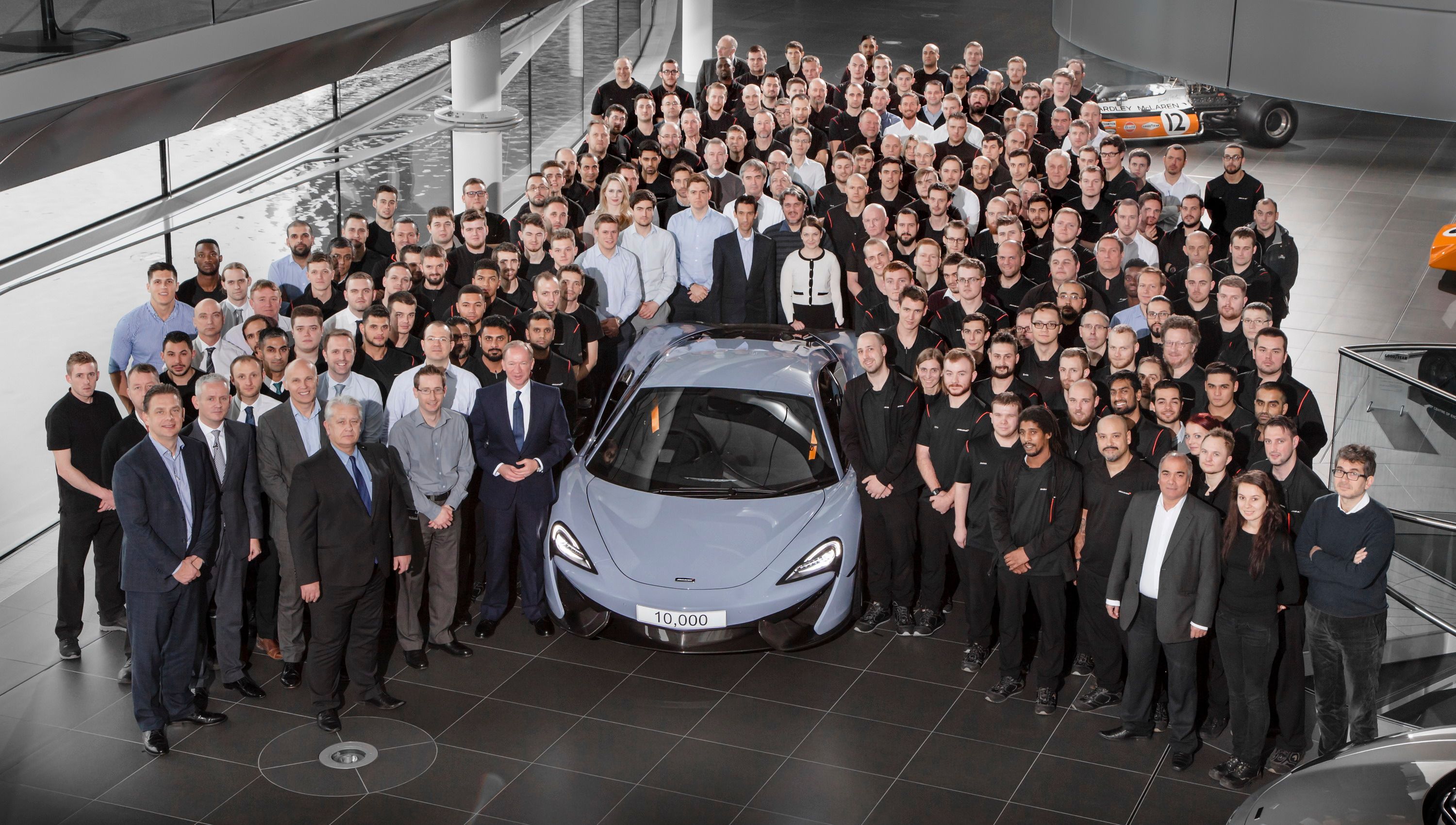British sports car manufacturer McLaren Automotive has hit an important milestone in December 2016, when it built its 10,000th vehicle. The 570S model finished in Ceramic Grey paintwork from the McLaren Special Operations "Defined" palette rolled out of the Production Centre assembly plant just over five years after the first car, a McLaren MP4-12C, was completed.
According to McLaren CEO Mike Flewitt, it took McLaren 64 months to build 10,000 cars. However, while the first 5,000 arrived after 42 months, it took only 22 months to produce 5,000 more. This figures speaks volumes about the company's development over the last couple of years, and especially in 2016. Earlier this year, the arrival of the new Sports Series family, which includes the 540C, 570S, and 570GT prompted McLaren to add a second shift at its Production Centre in order to handle the extra volume. The move doubled the plant's capacity from 10 to 20 cars per day. As of December 2016, the McLaren Production Center employs around 750 people out of a total of approximately 1,750 employees working for McLaren Automotive.
2016 also marked the announcement of the company’s third year of profitability in its first five years on the market as a vehicle manufacturer. This is unprecedented in the automotive industry. For instance, Tesla, which is considered a successful manufacturer, has yet to reach profitability in 2016.
McLaren also revealed that it's on target to almost double its sales in 2016 compared to 2015, from 1,654 to "over 3,000 cars". The brand said that this volume increase is thanks, in large part, to the ramp up in production and success of the Sports Series models. I guess it's fitting that the 10,000th car is a 570S. Speaking of which, this vehicle will be retained by the company in its Heritage Collection.
Continue reading for the full story.
Why it matters
Granted, 10,000 cars in five years might not sound like much considering that companies like General Motors, Toyota, and Volkswagen produce millions of vehicles each year, but for a company's that's been around for less a decade building bespoke sports car and supercars, it's quite the achievement. Needless to say, McLaren is by no means a new company, having been founded all the way back in 1963. However, the British firm was a race car builder only until Gordon Murray began developing McLaren's first road vehicle in the late 1980s. The final product arrived in 1992 as the F1. A revolutionary sports car back in the day, the F1 is now viewed as one of the most iconic vehicles ever built and considered a prized collectible.
After production of the F1 ended in 1998 with 106 examples built, McLaren continued to focus on racing until 2003, when it developed the SLR McLaren for Mercedes-Benz. The grand tourer remained in production until 2010, when the British firm had already decided to develop a new sports car. This time around, McLaren went with a full production model rather than an exclusive, limited-edition one like the F1, and the MP4-12C was born in 2011. This was followed by a Spider version and, in 2013, by the P1, McLaren's most powerful car to date, its first hybrid, and a spiritual successor to the F1. The 12C was replaced by the Super Series in 2014, which so far has spawned an impressive number of versions, including the 650S, 625C, 675LT, and a couple of race cars. Last year, McLaren introduced the Sports Series, its most affordable offering to date, as well as the car developed specifically to increase sales.
McLaren has already revealed plans to replace the current Super Series with a new model, to build a successor for the P1, as well as develop hybrid drivetrains for each nameplate in the lineup. As things stand, the British firm is growing at a fast pace, while also staying true to its roots and refusing to build mainstream models such as crossovers and SUVs. That's really cool!


